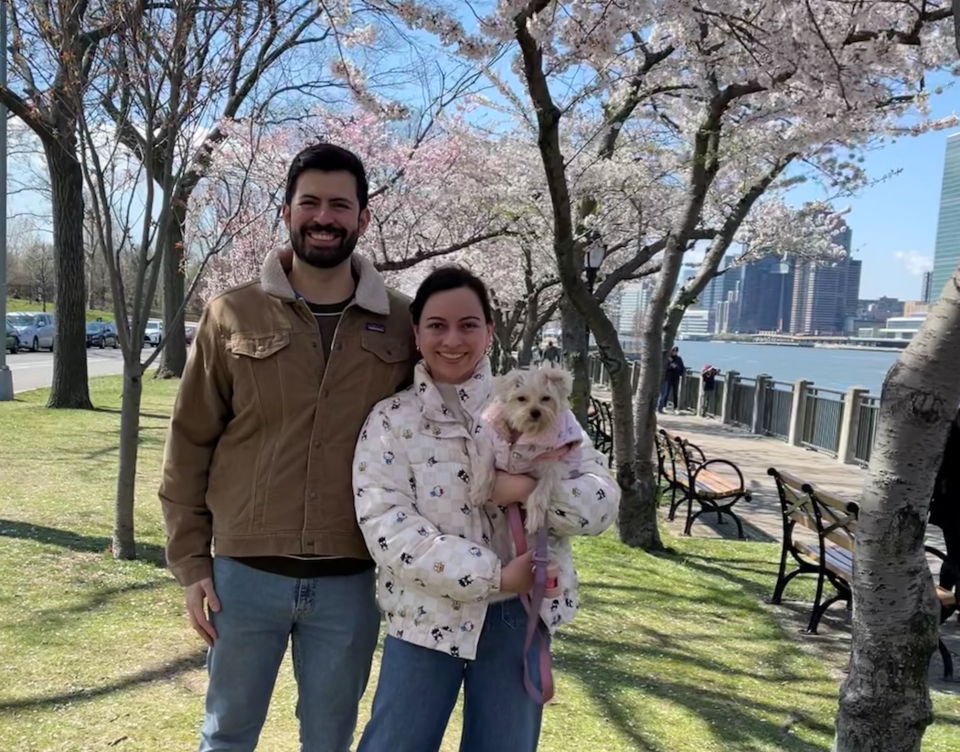By Vivian Vega
Do you remember what happened at the beginning of 2020? The COVID-19 pandemic started, and nobody understood or knew what was going to happen. Every day was lived in fear and uncertainty. I will never forget that each day was summed up in incessant bad news, new cases and ambulance sirens. Everyone was locked in their homes by government order to try to flatten the curve. But at 7:00pm, residents could be heard making noise from their windows or balconies in gratitude to the frontline workers who risked their lives every day. This made me believe that there would be a better tomorrow and not lose hope. But one thing is certain: Neither the government nor the healthcare system was prepared to handle a problem of that magnitude, and we became aware of the significant inequalities that exist in our society's structure.
My husband and I were in medical training in the city of NY (both in Brooklyn and the Bronx) in hospitals that treat underserved communities, and we knew how the living conditions in those communities put them at greater risk of contracting the virus and suffering more severe consequences. The state of emergency and the need for care were so great that I had to pause my Pediatrics training for a few months to support the adult emergency department. Many units had to close to open intensive care units for the many adults in need of immediate medical attention. We saw how patterns of social structure were revealed, probably already known by public health specialists for a long time. I began to understand health inequities by seeing everything with my own eyes. I observed how African American and Hispanic adults were at greater risk; they got sick more often. Compared to Whites, the group of African Americans and Hispanics are more likely to be uninsured, have low incomes, live in multigenerational homes, and make up a disproportionate share of the "essential" workforce, where working from home is frequently not an option. These challenges increase the risk of infection among the previously mentioned minority populations, make it harder to place an exposed person in quarantine, and are linked to mistrust and poor vaccination rates. 1, 2
Currently, I am studying to get a master’s in public health with a focus on community health sciences, and I am passionate about pediatric nutrition. Every day, I see how inequity persists. Although children were not at greater risk from the virus, they suffered secondary consequences due to the non-pharmacological interventions imposed by the government and the CDC. Schools and school lunches closed, their physical activity stopped, they didn't interact with other children as much and their parents may have lost their jobs due to restrictions or because they had informal employment, causing an increase in poverty. This made them vulnerable to isolation and depression, food insecurity, obesity, sedentary behavior and learning loss. 3
During the pandemic, studies found variations in the rate of childhood obesity and investigated disparities based on age, race or ethnicity, health insurance, and family income. One of them showed that nearly 25% of Hispanics, African Americans, people with public insurance and people from the lowest income quartile were obese, compared to 11.3% of white people, 12% of people with private insurance and 9.1% of people from the highest income quartile. This study was published in the Journal of Pediatrics in 2021. These results imply that the pre-existing discrepancies grew worse throughout the pandemic. 4
Another study, conducted at NYC hospitals and published in the Journal of Pediatric Obesity in 2022, showed that weight gain increased during the early pandemic compared to baseline and persisted into the late pandemic (2021). These findings add to the mounting evidence that the COVID-19 pandemic is contributing to an alarming and ongoing increase in childhood obesity, which has implications for public health. 5
As a resident of NYC and as a pediatrician, I believe that we need a better understanding of the emerging disparities to identify at-risk groups and develop targeted interventions. We must engage all stakeholders, reinforce population-level policies (like restrictions on unhealthy foods) and dedicate a lot of time to educating parents and children in an easy-to-understand and culturally sensitive manner. We need to rely on community leaders and work on earning the trust of residents so that they can once again have confidence in our healthcare system.
References
- Massion SP, Murry VM, Grijalva CG. Racial disparities in COVID-19 outcomes: Unwarranted statistical adjustments and the perpetuation of stereotypes. The Lancet Regional Health - Americas. 2022;14:100352. doi:10.1016/j.lana.2022.100352
- Health equity addressing the prepared by: Covid-19 health equity chasm. Accessed July 20, 2023. https://www.vumc.org/health-policy/sites/default/files/COVID%20Memo%20-%20Equity.pdf.
- Finding hope during a difficult time. Global Fund for Children. June 23, 2022. Accessed July 20, 2023. https://globalfundforchildren.org/news/finding-hope-during-a-difficult-time/?gclid=CjwKCAjwtuOlBhBREiwA7agf1jlVdLtA-UEJOyQ3VJS2yQD2s0utiZihVuw6fea-LEZIQyEw60RzkhoCJfkQAvD_BwE.
- Jenssen BP, Kelly MK, Powell M, Bouchelle Z, Mayne SL, Fiks AG. Covid-19 and changes in child obesity. Pediatrics. 2021;147(5). doi:10.1542/peds.2021-050123
- Miller A, Bochner R, Sohler N, et al. Modified body mass index z-scores in children in New York City during the COVID-19 pandemic. Pediatric Obesity. 2022;17(11). doi:10.1111/ijpo.12958
Vivian Vega is a Pediatric Gastroenterology Fellow and is pursuing an MPH degree at SUNY Downstate. Her passion lies in the field of Pediatric Nutrition, and she is committed to working toward reducing health disparities within our community.




